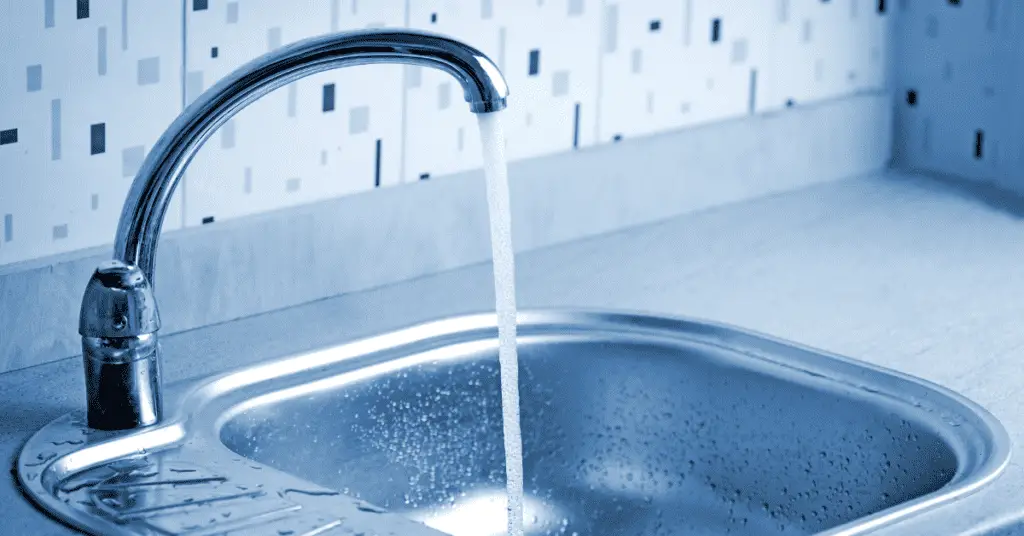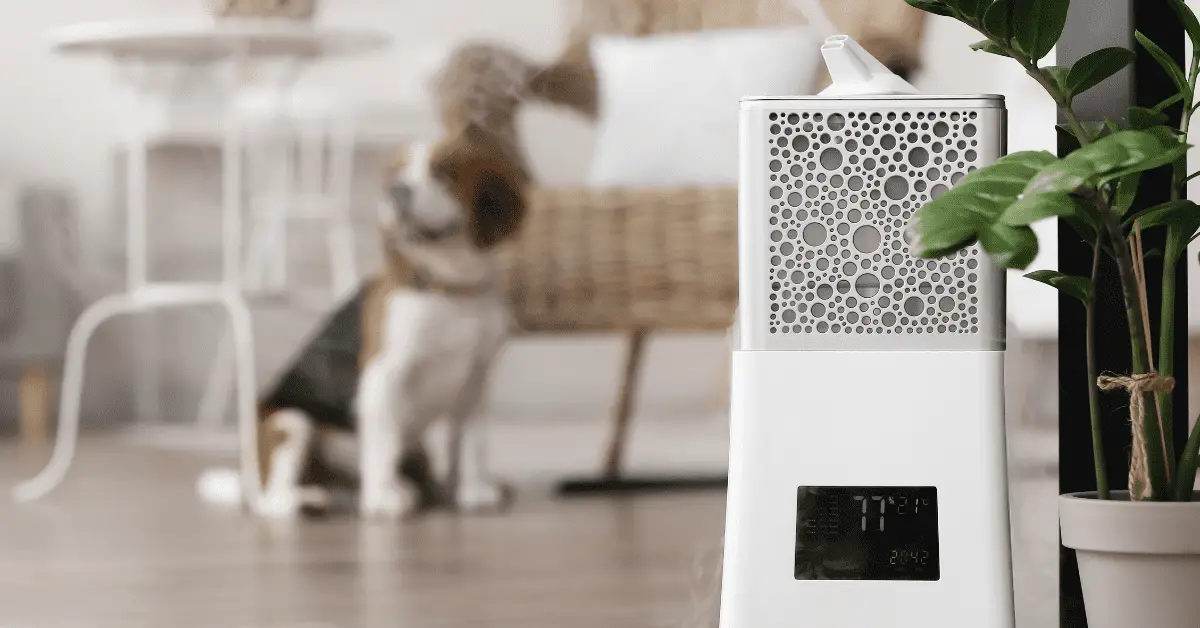Humidifiers can play a significant role in creating a healthy environment as they add moisture to the air and address conditions like dry skin and common colds. However, to get the best benefits from humidifiers, you have to ensure they are working effectively. One sign that a humidifier is not working to the best of its ability is when its water has turned black.
Humidifier water may turn black when mold or mineral deposits are present in the humidifier tank. Using the wrong type of water may also cause the humidifier water to turn black. Fortunately, you can prevent your humidifier from turning black by regularly cleaning your humidifier.
This article explores everything you need to know about keeping your humidifier and the water it produces clean. I’ll also discuss the reasons humidifier water turns black and how you can address these problems.
Why Does My Humidifier Water Turn Black?
Your humidifier water may turn black because of too many mineral deposits in your humidifier, there’s mold overgrowth, or you’re using the wrong type of water.
I’ll further discuss these factors and what you can do to fix them.
1. Your Humidifier Has Too Many Mineral Deposits
When humidifiers are used often, they absorb minerals like calcium, magnesium, and sodium from the water they’re filled with. These minerals build up in the form of hard deposits that sit in the humidifier.
These minerals are then absorbed by the water being emitted from the humidifier, causing it to turn black.
How To Address Mineral Deposits
There are several things you can do to ensure mineral deposits don’t turn your humidifier water black. This includes:
- Empty your humidifier after each use. Make sure you empty your humidifier’s water reservoir each time you use it. This will prevent the likelihood of mineral build-up.
- Clean your humidifier regularly. Regularly cleaning your humidifier will stop minerals and other harmful organisms from building up.
- Change the filter often. Filters catch both mold and minerals, so it’s essential to change them often to ensure no build-up or residue. Ideally, you should change your filter every 1-3 months, depending on how often you use your humidifier.
2. There’s Mold Overgrowth in the Humidifier
Over time, your humidifier may become a breeding ground for mold. Mold is a type of fungus that grows in enclosed moist environments, such as your humidifier’s tank. There are various mold types that your humidifier may become home to, including black mold and green mold.
When there is mold in your humidifier tank, the water in it may turn black, green, or brown. It is essential to ensure that your humidifier doesn’t have mold in it, as mold can pollute the air and cause asthma attacks, fevers, and lung inflammation in more extreme cases.
So, how can you prevent mold from building up?
You can prevent mold from building up by monitoring humidity levels. Emptying and drying out your humidifier is also important. Since mold can only thrive in humid conditions, the only way to tackle them is by keeping your humidifier clean and dry.
Monitor the Humidity Levels
Humidifiers are designed to increase humidity in a room, but you should make sure that the humidity does not get too high. Use a hygrometer, an instrument that measures humidity in the air to ensure that the humidity is not crossing 50%.
Some humidifiers, such as the Levoit Humidifier on Amazon.com, have built-in hygrometers.
However, you can also purchase a separate hygrometer. The ThermoPro TP50 Digital Hygrometer on Amazon is an excellent choice as it is both a hygrometer and a thermometer.
Empty and Dry Out Your Humidifier
After using your humidifier once, empty the water and leave the tank to dry. You may want to wipe out the tank if you are pressed for time or allow it to air dry. This will prevent a build-up of moisture, reducing the humidifier’s vulnerability to mold.
When you’re not using your humidifier, place a packet of baking soda in your humidifier tank. The baking soda will absorb droplets of moisture that you may not be able to remove by hand.
How To Clean Mold Out of Your Humidifier
Despite these steps, if you find mold in your humidifier’s tank, you can clean it with white distilled vinegar or 3% hydrogen peroxide. There are several parts of the humidifier you need to clean, including the base, the wick, and the tank. Here are the steps to cleaning your humidifier:
- Scrub the base. Unplug your humidifier and take it apart, separating the base from the tank. Pour undiluted hydrogen peroxide or distilled white vinegar into the base. Wear a pair of gloves and use a toothbrush to scrub at the sides of the base. Leave the solution in the base for 10-30 minutes and then pour it out. Rinse the solution out entirely with distilled water. Repeat if you still see the mold.
- Clean the wick. If your humidifier has a wick, rinse it in clean or distilled water. If rinsing it in water does not remove layers of dirt or a layer of white particles, you may need to replace the wick – make sure the new wick is compatible with your humidifier.
- Clean the tank. Make a solution of four parts water to one part, 3% hydrogen peroxide, or one-part white vinegar. Fill the tank with this solution and allow the solution to sit for 15-20 minutes. Pour the solution out and allow the tank to air dry,
- Dry the parts. Allow all the parts of the humidifier to dry entirely before reassembling them. If you are using the humidifier, ensure you fill it with distilled water or if you are not using it, place a packet of baking soda in it – as advised above.
3. You’re Using the Wrong Type of Water
If you find that your humidifier is still emitting black water even after cleaning out your humidifier, you may need to change the kind of water you’re using. The Environmental Protection Agency (EPA) and the US Consumer Product Safety Commission (CPSC) recommend that you use distilled water in your humidifier. In this article, I discuss 5 reasons why you need to use distilled water for your humidifier.

This is because tap water can contain harmful microorganisms, polluting the water and the air in the environment. These microorganisms may be causing the water to turn black.
To fix this, ensure you are only using distilled water in your humidifier. You can order distilled water for humidifiers on Amazon.com. Try this pack of 12 bottles of Resway Distilled Water; it’s environment-friendly and can prolong the longevity of your humidifier.
What To Do If the Water Is Still Black
If you’ve tried cleaning out your humidifier, are using distilled water, and are following the manufacturer’s directions but find that your humidifier is still producing black water, you may need to look for external help.
Consult with your humidifier’s manufacturer or a handyman if you notice extreme build-up. The manufacturer may recommend cleaning methods or cleaning solutions that are specifically suited to the humidifier you are using.
However, if your humidifier is a few years old or uses it very frequently, you may need to consider replacing it. Replacing your humidifier when displaying signs of reduced function will ensure that you keep the air around you clean and healthy.
Final Thoughts
The water in your humidifier may turn black for a variety of reasons. Blackwater may indicate the presence of mold, bacteria, or harmful microorganisms. It also may indicate that you’re using the wrong type of water. Addressing the problem will help ensure your humidifier has a long life – protecting you and cleansing the air around you.
Sources
- Everything What: Why is there black stuff in the humidifier?
- Get Canopy: When should you change your humidifier filter?
- Good Humidity: Why Does My Humidifier Water Turn Black?
- Health Line: How to Clean and Maintain Your Humidifier
- Medical News Today: Benefits of using a humidifier
- The Spruce: How to Clean a Portable Humidifier
- The Ozone Hole: What To Put in Humidifier To Prevent Mold
- Time: The Creepy Truth about Humidifiers


